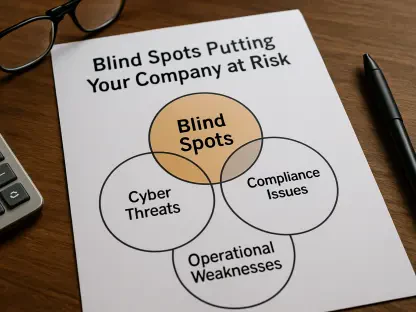What happens when a lifelong dream of stepping into the spotlight turns into a devastating financial trap? For countless individuals across the globe, the allure of a modeling career has led to heartbreaking losses, with scammers exploiting hope and ambition through deceptive practices. Reports indicate a sharp rise in fraudulent schemes targeting aspiring models, raking in thousands of dollars from unsuspecting victims. This pervasive issue demands attention, as anyone—from young dreamers to mature hopefuls—could fall prey to these sophisticated cons.
A Dream Turned Nightmare: Could Anyone Be Next?
The journey often begins with an innocent scroll through social media, where an ad promising fame or quick earnings catches the eye. For 79-year-old Judy Corker from Manchester, a simple click on such an advertisement led to a staggering loss of $650. Lured by the idea of becoming a mature model, she found herself entangled in a scam that promised much but delivered nothing. Her story serves as a stark reminder that these traps are not limited to a specific age group or background.
Many fall for the charm of glitz and glamour without suspecting deceit. Scammers craft their pitches to seem legitimate, often using polished websites or professional-sounding communication. The emotional pull of achieving a dream can cloud judgment, making it easy for fraudsters to exploit trust. Judy’s experience highlights how quickly excitement can spiral into regret, urging caution for anyone tempted by similar offers.
Why Modeling Scams Are on the Rise
The fashion industry’s growing emphasis on diversity has created exciting opportunities for aspiring models of all ages and looks. However, this positive shift has also paved the way for scammers to cast a wider net. Fraudulent agencies, once primarily targeting young individuals, now prey on mature adults, capitalizing on trends that celebrate unique and older faces in the industry.
Data from National Trading Standards reveals a significant uptick in reported modeling scams over recent years, with losses mounting into the millions annually. These schemes have evolved, employing intricate contracts and fake job offers to appear credible. The accessibility of online platforms further amplifies the reach of scammers, allowing them to target a global audience with ease and anonymity.
This alarming trend underscores a darker side to an industry often associated with beauty and prestige. As the demand for diverse talent grows, so does the risk of exploitation by those posing as legitimate professionals. Staying informed about these developments is crucial for anyone considering a step into this world.
Red Flags to Watch for in Modeling Scams
Identifying the warning signs of a modeling scam can mean the difference between pursuing a dream and suffering a financial blow. One major indicator is the demand for upfront fees, often disguised as costs for photoshoots or portfolio creation. Legitimate agencies never request payment for opportunities, yet Judy was convinced to pay $650 for images that turned out to be worthless.
Other signals include promises that seem too good to be true, such as high-paying gigs with little effort, or pressure to make quick decisions. Scammers frequently create a sense of urgency to prevent careful consideration. Additionally, unverified agencies or studios pose a significant risk—73-year-old Roland Parker lost $1,300 after arriving at a Manchester studio that had no record of his supposed booking. These real-life examples illustrate the deceptive tactics used to ensnare hopefuls.
Voices of Experience and Expertise
Hearing directly from those affected brings the harsh reality of modeling scams into focus. Judy reflected on her photoshoot, saying, “I felt quite good walking through the street all glammed up,” only to later discover she had been deceived. Her initial thrill turned to dismay when the promised cruise job, complete with a seemingly legal contract, proved to be a fabrication.
Roland shared a similar tale of regret, noting, “I’m not well off, and I thought this job could help me.” His loss of $1,300, compounded by travel expenses, left a lasting impact. Expert Mike Andrews from National Trading Standards adds a sobering perspective: “Scammers aren’t content with taking a few hundred dollars anymore; they return repeatedly with promises of lucrative contracts.” His warning, supported by a surge in Action Fraud reports, emphasizes the persistent and evolving nature of these frauds.
Protect Yourself: Practical Steps to Stay Safe
Taking proactive measures can shield aspiring models from falling victim to scams. A fundamental rule is to refuse any upfront payments—genuine agencies do not charge for opportunities, as Mike Andrews advises. If a fee is requested, it’s a clear signal to walk away without hesitation.
Researching an agency thoroughly is another vital step. Verify their legitimacy through official records like Companies House and seek independent reviews to confirm their credibility. Secure payment methods, such as PayPal’s “goods and services” option, offer buyer protection—Judy managed a refund this way, while Roland’s use of “friends and family” left him with no recourse for his $1,300 loss. Resisting pressure, seeking a second opinion from trusted individuals, and reporting suspicious activity to Action Fraud or Trading Standards further bolster safety. These actions empower individuals to pursue modeling aspirations without risking hard-earned money.
Looking back, the stories of Judy and Roland served as critical lessons for many who had once been blinded by the promise of fame. Their experiences illuminated the deceptive practices that had ensnared countless others. By sharing their hardships, they helped raise awareness, ensuring that future hopefuls could approach opportunities with greater caution. Moving forward, adopting protective strategies and staying vigilant remain essential steps for anyone dreaming of a modeling career, turning past pain into a powerful shield against future scams.









